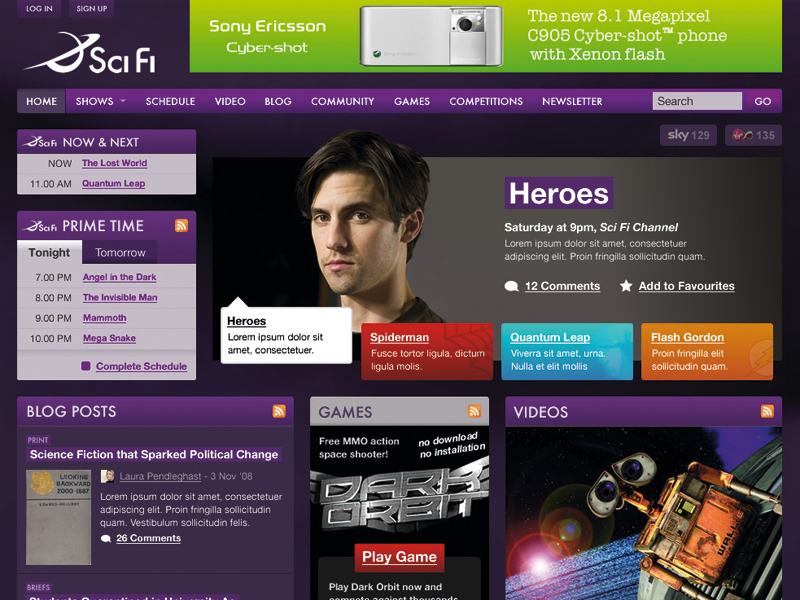Pro tips to breathe new life into your website
How a quick design refresh can be as effective as a full redesign

As the global economy continues to stutter its way through 2009, companies are increasingly fighting to be heard.
In recent months, investment has shifted abruptly from traditional media and 'real world' environments to the internet, which provides the means to reach the largest possible audience in a relatively cost-effective manner.
In theory, this is great news, but in practice the picture isn't entirely rosy. As Clearleft's managing director Andy Budd explains: "Many people view a website as a one-off project, rather than an ongoing concern. Organisations often go through a big redesign and then let a website fall into disrepair."
Instead, he recommends training yourself and your clients to think of a website as a staged process, which should be updated every three to six months: "That way, it'll always be up to date and will last longer, rather than spending the majority of its life underperforming."
Instead of tearing a site down and rebuilding it from scratch, figure out ways to make the existing site work harder.
"Breathing new life into a site through a design refresh is one such option," suggests Budd. "Smart companies also explore usability improvements to help conversion rates – small tweaks to registration and checkout processes can see conversions skyrocket and pay for themselves in no time."
The trick is in knowing the difference between an expense and an investment. While some sites are too outdated to make do with subtle tweaks and need a radical revamp, you can often do a lot with a little, thereby finding yourself in tune with companies cutting back on large capital expenditures.
Get daily insight, inspiration and deals in your inbox
Sign up for breaking news, reviews, opinion, top tech deals, and more.
Back to basics
Even if you only want to make small changes, Alex Willcocks, creative director at Engage Interactive, recommends approaching your site refresh with an open mind. "Sometimes going back to the beginning and thinking from that standpoint can bring surprising results," he says, "especially with the number of resources available to web designers increasing all the time."
However, there are certain tried and tested considerations that will almost always play a part, including tweaking content, amending graphic design and integrating new components.
It's essential to consider how each element works in a modern context, especially if a site is long out of date. "Users want information quicker than ever before and if you don't supply it, their interest will move elsewhere, regardless of whether you're a trusted brand or resource," argues Tim Gibbon, director at Elemental.
Gibbon reckons there's a desired immediacy to website content and structural revamps must take this into account. Now isn't the time to be coy; tweak homepages so they enable users to rapidly access the most important current content, rather than making them hunt for it.
Alec East, director of Do Tank Studios, adds that immediacy in modern sites sits alongside a certain informality. Often, just changing the name of a site's sections results in something more contemporary.
"There's a move away from 'catalogue' and 'about us' to more descriptive and cognitive terms, such as 'men's shorts'," East says. This assists users in finding specific types of content in a more intuitive manner than when generic terms are used and improves things from an SEO perspective.
And on the subject of search engines, East points out that they've become the only way many users find information online. "Since most people find a site via a search engine, they could enter anywhere," he says.
Consequently, during refreshes, it's important to consider whether it's obvious how to navigate straight away, regardless of where you enter, and whether basic information about the organisation needs to be available site-wide (such as in the footer), so new users immediately know a little more about the site they're visiting.